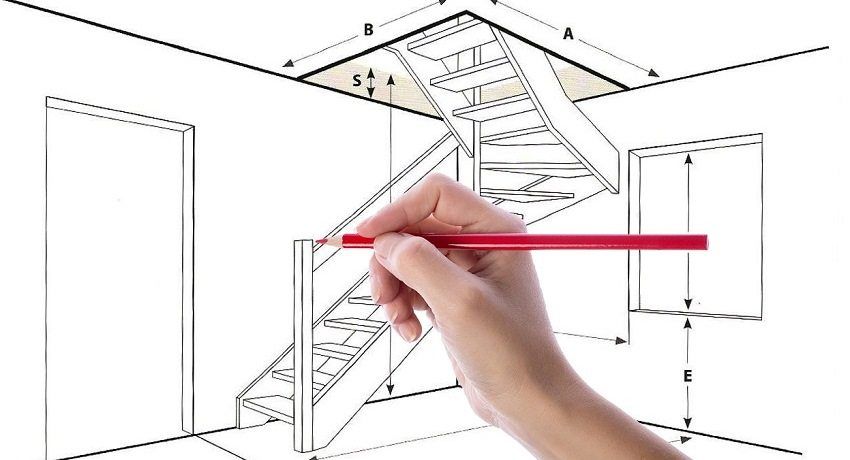This article discusses in detail the capacity for sewage: plastic wells, storage tanks and structures for other purposes, their features and main types, technical parameters, including dimensions. The text contains all the necessary information that allows you to get acquainted with a brief overview of the existing range on the market, prices for products and the rules for their selection, as well as further service after installation.

General information about the storage tanks for sewage
Construction of a house in a country village or at the dacha is accompanied by additional costs for the arrangement of water supply and sewage systems, since there are no centralized systems in such an area. The easiest way is to buy a barrel for sewage or another type of cumulative type structure, where all wastewater will be diverted.

Such containers are safe for the environment and completely sealed, but they also require regular maintenance, which is to clean the tank from sediment. Installing an internal sewage system in a private house is no different from installing a similar system in an apartment in a high-rise building. The only thing that the owner of a country plot will have to think about is the process of waste disposal.
Most often, the storage tank is a cylindrical reservoir. It is equipped with a pipe intended for collecting liquid and a well that is used for wastewater treatment. The supply pipe leading from the house at an angle is connected to the branch pipe. When the tank is filled, it is cleaned through the mouth of the well.
Helpful advice! To save money and do without earthworks, you can install a cumulative structure on the surface. But in this case, the appearance of the site will be spoiled, so for aesthetic reasons it is better to hide a septic tank under the ground.
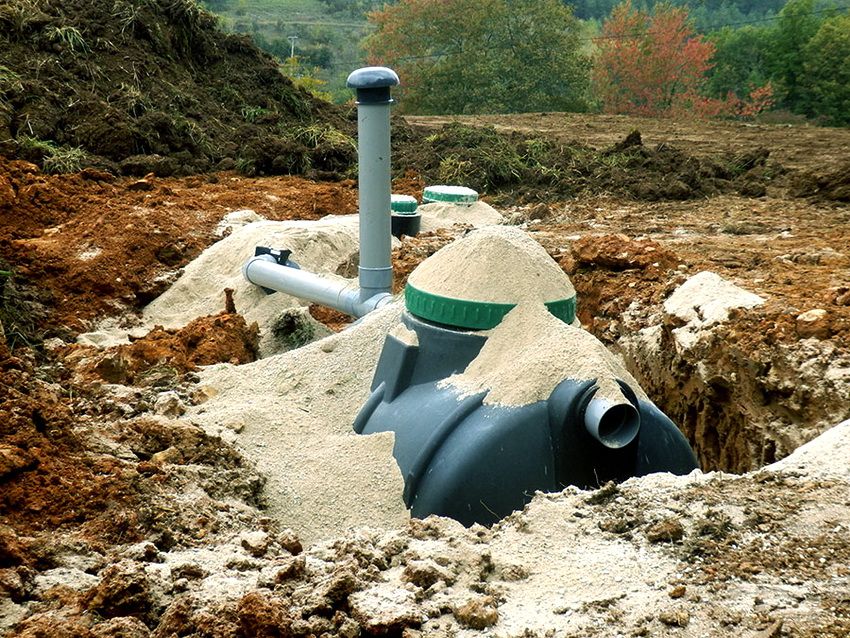
The main functions of cumulative structures:
- Collection of waste and effluent from a residential building.
- Storage of wastewater for a certain period.
- Providing comfort for residents.
- Preservation of the surrounding area in its pure form.
The use of storage tanks for collecting waste has both advantages and disadvantages.
Why is it profitable to buy a sewage tank with an accumulation function:
- simple installation system that allows the cottagers to do the installation by hand;
- environmental safety and no risk of environmental pollution by waste, due to the tightness of the structure;
- the cost of a plastic storage tank for sewage is much lower than the cost of building a septic tank based on other materials or an autonomous station designed for biological wastewater treatment.
The disadvantages of such structures can only be attributed to the need for regular cleaning with the help of specialized equipment. The frequency of such maintenance depends on the capacity of the tank, as well as the number of drains.

The proposed range of tanks designed to collect sewage, includes products of various modifications and sizes. The general classification of such structures is based on the material of manufacture. It is he who determines the cost of the product, its technical and operational characteristics, properties and features of installation.
Concrete structures are rarely used. This is primarily due to the limited service life of a product made from this material and installed in the ground. Concrete is vulnerable to moisture, which provokes its rapid destruction. In addition, the installation of such capacity is accompanied by many difficulties and requires the use of heavy construction equipment.
Metal constructions are also not very reliable, although they are used much more often than concrete products. This material is subject to corrosive destruction under the influence of aggressive media and water.
Helpful advice! If you have to buy a container for sewage from metal, it is better to give preference to products with a protective coating, and both internal and external. In addition, all joints and seams must be filled with a sealant to prevent the ingress of polluted wastewater into the soil.

The most optimal for the suburban area will be buying a plastic tank for sewage. These designs have many advantages in comparison with the previous versions:
- the material is not at all afraid of corrosion and does not react to the negative effect of aggressive media;
- the product has a light weight, which simplifies transportation and installation system, and also eliminates the use of special equipment;
- the capacity is monolithic, due to the absence of seams, and hermetic.
With the help of a sealant, it will be necessary to process only those areas where a plastic septic tank is connected to the pipe.
The sewer well is a hermetic construction that facilitates the flow of drains through the system with minimal resistance.
The structure of such elements of the system is the same:
- bottom, equipped with a tray or not having it;
- mine or extension section;
- cover or hatch.

Recommended sites for the installation of wells extend to the places of relief sections of the section, at the entrance or exit of the pipeline, as well as pipeline branches. Installation of these elements in other places is allowed, if it is consistent with the scheme of the system and does not contradict the calculations.
According to their purpose, wells of the following types are distinguished:
- distribution;
- viewing;
- drainage or accumulative.
In addition, the use of plastic wells for cable conduit is widespread. In this case, a network of communications cables runs underground, which are protected by a system of tunnels from the influence of groundwater and other destructive factors.
Externally, wells for sewage, produced by different manufacturers, have virtually no differences. The variability is only in size, the system of elevations, where the outlets and entrances are located, in the absence or presence of a damper of the speed of movement of the flow and in some technical features. Mine design is in the form of a corrugated pipe.
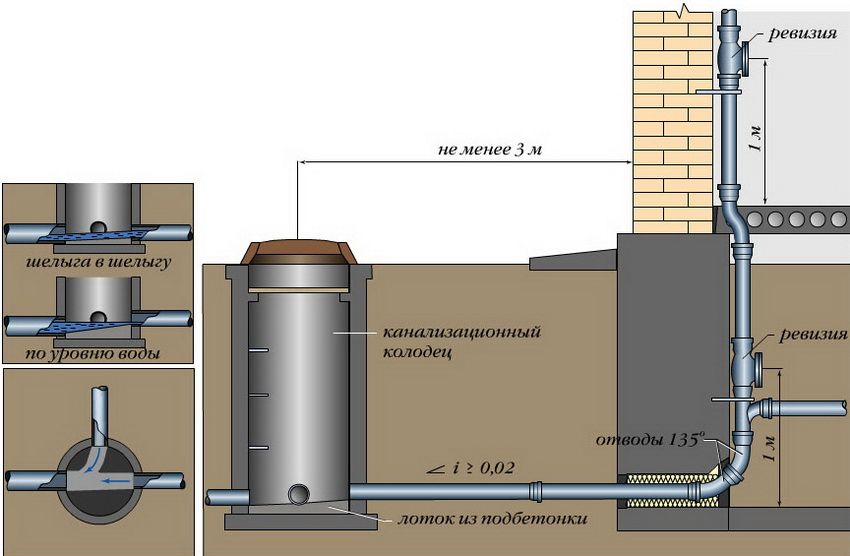
The shape of the tray may be different:
- angular;
- cruciform;
- straight pass;
- triple.
Helpful advice! To ensure the tightness of the well, it is recommended to use rubber seals.
Inspection elements are mounted in the most vulnerable areas of the system and are used to monitor its condition.
These places include:
- sideline junctions;
- depth drops;
- zones where the diameter of the pipeline changes, its slope or direction.
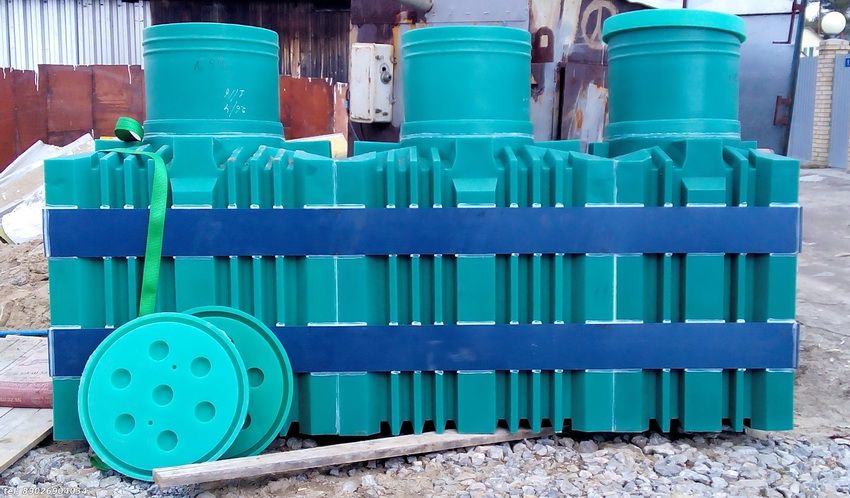
The tray part located at the very bottom most often has a diameter of 80 cm. Here is the outlet and entry of pipes whose diameter is in the range 110-160 mm. The shaft is formed on the basis of extension sections 50 cm long. As a fixing element, sealing rings are used that are pre-treated with silicone.
The main function of the distribution well is to control the movement of fluid flows within the drainage system, stormwater or sewage for household purposes. This procedure is carried out naturally due to the design features of the product.
The distribution well consists of the following elements:
- tray with a high margin of safety, equipped with ribs of ring type;
- neck;
- the screw cover providing dense closing of a well.
In general, the design is reliable and hermetic, thanks to durable fastenings and sealing rings.
Price and dimensions of plastic rings for sewage, trays and covers Rodlex:
| Name of part (height / diameter, mm) | price, rub. |
| Cap (150/800) | 3050 |
| Base (tray) (500/800) | 4300 |
| Ring (500/800) | 4300 |
| The extension neck (600/800) | 4512 |
| Ring (1000/800) | 8750 |
Accumulation or drainage well is considered the most difficult element in relation to the installation, despite the standard structure in the form of a tray, lid and main sections. Its installation is carried out at the lowest point of the site where water will flow.
The cumulative well is filled from different sources:
- treatment facilities;
- drainage system;
- storm drains;
- septic tanks.
But in relation to the operation of such structures are simple. They do not need frequent cleaning procedures.
Helpful advice! For the arrangement of cumulative wells it is better to use solid foundations with adjustable volume due to the extension sections. Water that accumulates over time in the design can be used for economic purposes, for example, for filling a reservoir or watering plants. In this case, do not do without the pump.
Price, sizes of plastic rings for sewage, covers and fundamentals Rodlex:
| Name of part (height / diameter, mm) | price, rub. |
| Cap (150/800) | 3050 |
| Ring (500/800) | 4300 |
| Base (1500/980) | 15600 |
Polymer sand manhole for sewage is made on the basis of polymer raw materials with a small addition of sand. The design is formed by the spike / groove method of polymer rings. Due to this, the elements of the well are adjacent to each other as closely as possible, so there is no need for additional sealing. Silicone stitching is allowed.
The bottom is used as a base. The construction itself is made up of rings, and the upper one should have the shape of a cone, where the closing hatch is installed. The cost of such wells is quite high, but there is an opportunity to save on installation work and further operation.
Advantages of polymer products:
- reliability and high safety margin;
- light weight (the maximum weight of any part does not exceed 60 kg);
- high resilience to static and mechanical properties;
- long service life (up to 100 years);
- convenient service system;
- simple transportation and installation system;
- high resistance to the negative effects of moisture and low temperatures.
The price of polymer rings for sewage, bottoms and cones Polex Plast:
| Name of part (height / diameter, mm) | price, rub. |
| Ring (200/750) | 1120 |
| Bottom (36/750) | 1120 |
| Cone (140/1000) | 1280 |
| Ring (200/1000) | 1280 |
| Bottom (36/1000) | 1280 |
| Ring smooth (200/1000) | 1280 |
| Cone with the hatch (120/1000) | 1600 |
Polymer sand manhole constructions are universal and can be used for various purposes. They are able to withstand pressures up to 0.4 tons.
In the building materials market, you can buy plastic containers for sewage of various volumes and modifications. For their creation, special production technologies are used, which allow to obtain products with improved characteristics. Such a material is able to withstand severe tensile or compression loads, which makes it possible to use polymer septic tanks without fear that the soil, during heaving and movement, can damage or deform the container.
Why it is profitable to buy a plastic tank for sewage under the septic tank:
- the lightweight weight of the structure allows for transportation using an ordinary car;
- simple installation system does not require the participation of specialists, with the installation of a septic tank can be managed together;
- low cost of the product;
- inertness to the negative influence of aggressive media, due to which the terms of effective operational service are measured in tens of years.
Helpful advice! In order to reliably and efficiently install a plastic container for drains, be sure to anchor it to a concrete slab. In addition, you will need to create a clay or concrete backfill around the tank. Thanks to this, the septic tank will remain in place, and will not float like a float in the soil.
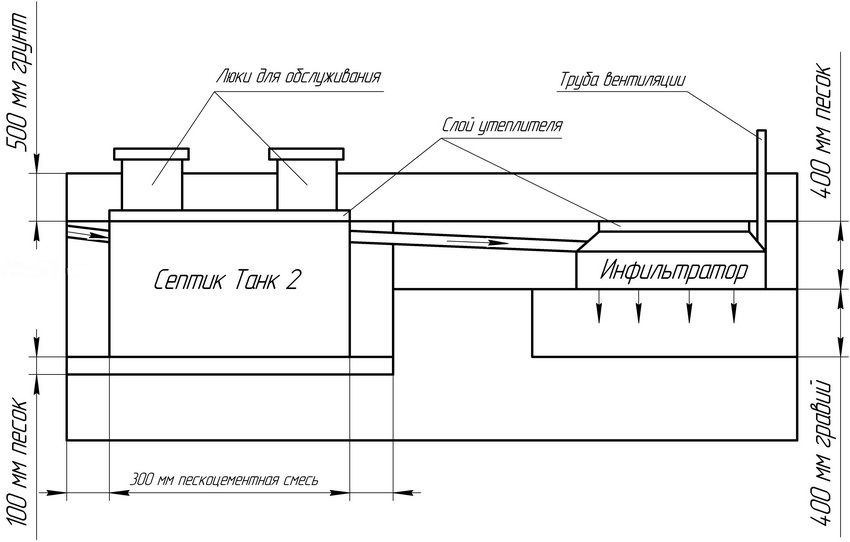
Among the shortcomings of plastic containers for drains can be noted their fragility under the influence of low temperatures. For this reason, experts recommend backfilling when installing a structure using insulating material.
Polypropylene is made from polymers. Despite the similar basis, this material is much stronger than plastic, due to the inclusion of emollients that increase plasticity.
The unique composition has provided polypropylene products with many advantages:
- resistance to temperature extremes;
- resistance to cracking due to temperature changes;
- long service life (about 100 years);
- tightness and water resistance, thereby eliminating the likelihood of contamination of water sources with drains;
- high resistance to steam when sterilizing the system and aggressive media.
Polypropylene products are endowed with thick walls within 5-20 mm. In addition, the design provides for the presence of stiffeners. These elements prevent the tank from floating up and provide additional strength.
The average price of polypropylene maple septic tanks:
| Model | Spaciousness, m? | Dimensions (height / width / length), mm | price, rub. |
| Maple-3 | one | 880/910/1200 | 22,000 |
| Maple-5 | 1.5 | 1100/1100/1500 | 30,000 |
| Maple-5H | 1.5 | 1100/11001950 | 32,000 |
| Maple-7 | 2.5 | 1500/1300/1500 | 40,000 |
| Maple-7H | 2.5 | 1500/1300/1950 | 44000 |
Polyethylene products are made of polymers with the addition of fiberglass filaments. Due to this, the walls are perfectly able to withstand such negative phenomena as the movement of the soil and its swelling. Tanks respond well to stretching and smooth compression, but they are afraid of sharp blows. Forcing can damage the tank and cause a crack.
Advantages of polyethylene septic structures:
- small weight of the product;
- a wide range of configurations, including spherical and square shapes;
- long service life (in the range of 30-50 years);
- resistance to the negative effects of aggressive environments.
Like other plastic products, polyethylene containers are easily damaged under the influence of sudden mechanical loads.
Helpful advice! Choose the volume of the drive should be given the fact that one person needs approximately 1 m ?. Thus, for a family consisting of 4 or more people, you will need to buy a plastic sewage tank of 5,000 l or 5 m ?.
The average price for plastic products of Polex:
| Dimensions (length / height without neck), mm | Spaciousness, m? | Wall thickness, cm | price, rub. |
| 1800/1200 | 2 | 1.8 | 25,000 |
| 2700/1200 | 3 | 1.8 | 30,000 |
| 3600/1200 | four | 1.8 | 39,000 |
| 2900/1500 | five | 2.5 | 57,000 |
| 3400/1500 | 6 | 2.5 | 80,000 |
| 4000/1500 | 7 | 2.5 | 87000 |
| 4600/1500 | eight | 2.5 | 95,000 |
Septic tanks, autonomous sewers and other types of structures are used to clean household sewage in a private house.
There are two types of waste:
- Black – drains from the toilet.
- Gray – waste liquid from the kitchen, bathroom, washing and household appliances, such as a dishwasher or washing machine.
Sewage waste in the total volume of wastewater accounts for about 30%. Most often, the waste fluid comes from the bathroom and washing. On average, one person spends about 160-200 liters of water per day. In most cases, the mechanical and biological cleaning method is used for cleaning the system, since these technologies are considered the most practical, safe and affordable.
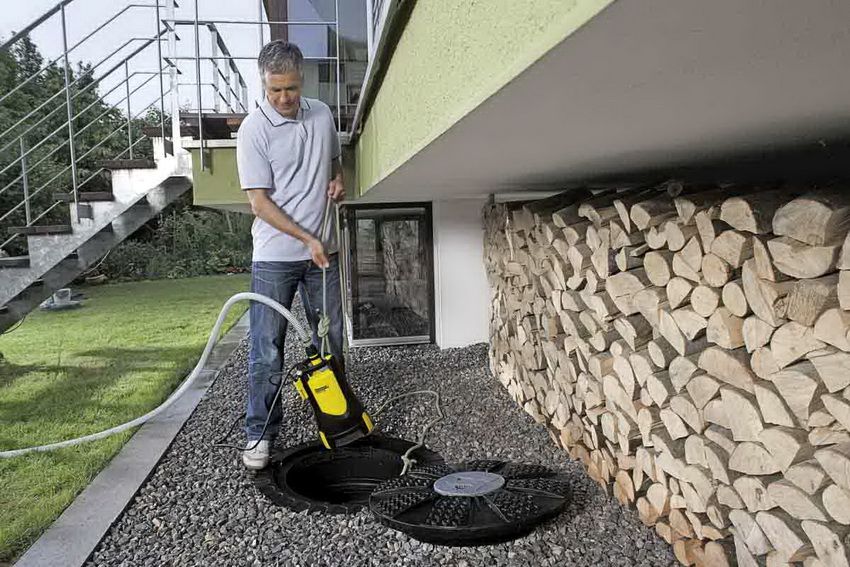
Sewage consists not only of the pipeline and storage capacity. For the effective functioning of the system, additional communication equipment in the form of a vent tower will be required. Such a pipe serves as a connecting element between the general highway and the atmosphere. The main task of the fan stand is to provide ventilation inside the system.
In what cases you need to call special equipment:
- the tank is full and an unpleasant smell has appeared on the site;
- pressure in cranes fell;
- the fluid in the plumbing system is rusty;
- there is turbidity of water in the well;
- storm sewage system clogged or poorly performing its function.
Many factors affect the comfort and service life of a sewage system. For this reason, it is very important to correctly calculate the parameters of the system and select the appropriate elements. And it is not only the quality of the installation that matters, but also the timely maintenance of the sewage system, cleaning and maintenance. Only in this case, the system is able to serve the entire period stated by the manufacturer.
